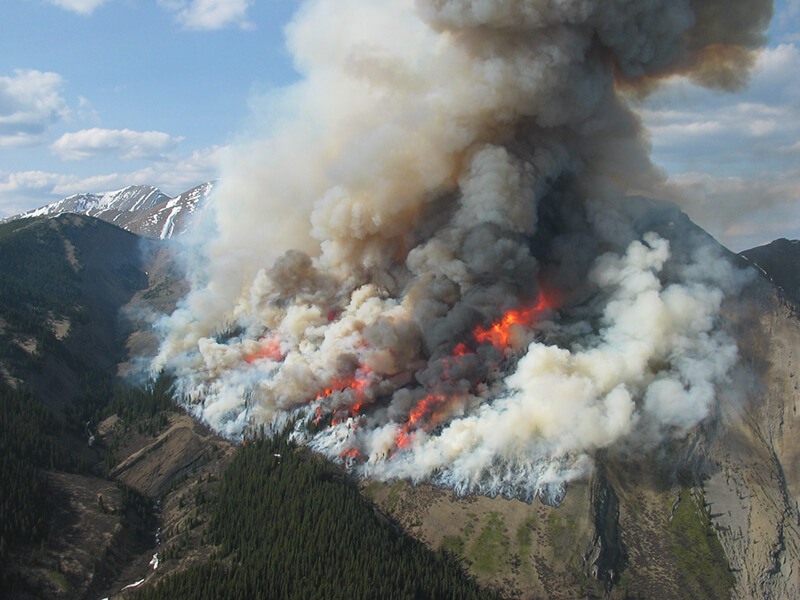
Abstract
Fire suppression has altered the historical mixed-severity fire regime and homogenised forest structures in Jasper National Park, Canada. We used dendrochronology to reconstruct fire history and assess forest dynamics at 29 sites
in the montane forests. Based on fire scars and even-aged post-fire cohorts, we determined 18 sites had mixed-severity fire histories through time, and 11 sites had evidence of high-severity fires only – yielding a mixed-severity fire regime for the
study area. Lodgepole pine, hybrid spruce and Douglas-fir established simultaneously after low- and high-severity fires. Regardless of fire history, forest canopies were mixed in composition and subcanopies were strongly dominated by shade tolerant hybrid spruce. Despite their size, subcanopy trees were similar in age to the canopy trees. Current stand composition and age structures largely reflect the effects of high-severity fires that burned,110 years ago at 18 of 29 sites. In the absence of fires after 1905, forests have matured simultaneously, homogenising the landscape and resulting in forest structures that are more conducive to high-severity fire than are fires of a range of severities. Proactive fire management is justified to restore fire as a vital ecological process and promote forest resilience by countering the effects of a century of fire suppression.
Citation
Chavardes, R.D. and L. D. Daniels. 2016. Altered mixed-severity fire regime has homogenised montane forests of Jasper National Park. International Journal of Wildland Fire. http://dx.doi.org/10.1071/WF15048
To access the full article, go here (with subscription), or contact the authors or David Andison.







